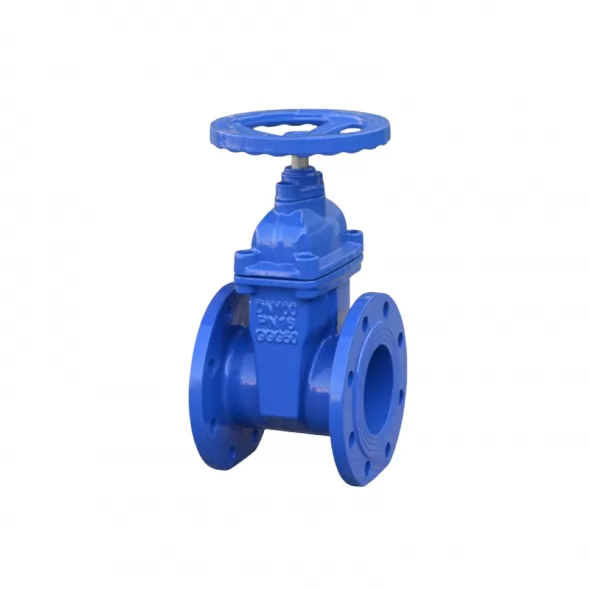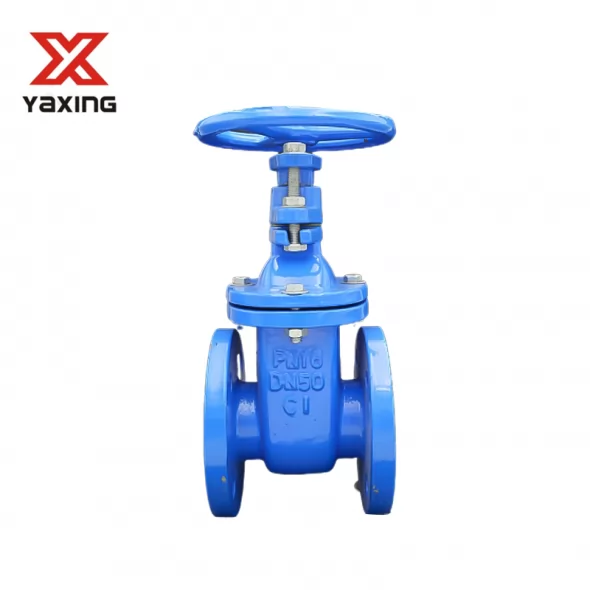+86 186 3170 8948
+86 186 3170 8948
Jan. 09, 2025
In industrial fluid control systems, gate valves play a critical role in ensuring efficient flow management. Among the various types of gate valves, resilient seated gate valves and metal seated gate valves are two of the most commonly used. While both serve the primary purpose of regulating flow, their differences in design, materials, and applications make each suitable for specific scenarios. This article explores these two valve types, their characteristics, and their distinctions to help you make an informed choice.
A resilient seated gate valve features a soft, elastic material, such as rubber or elastomer, as its sealing component. This type of valve ensures a tight seal by pressing the resilient material against the valve body or seat, effectively preventing leakage.
Key Features of Resilient Seated Gate Valves:
Seal Material: Utilizes soft, flexible materials (e.g., EPDM or NBR rubber) for enhanced sealing.
Design: The gate is encapsulated in rubber to ensure no direct metal contact with the seat.
Operation: Suitable for low to medium pressure applications, offering a bubble-tight seal.
Corrosion Resistance: The non-metallic sealing elements resist rust and corrosion, making it ideal for water and wastewater systems.

A metal seated gate valve employs metal-to-metal contact for sealing. The gate and the seat are made of robust metallic materials, often hardened to withstand wear and tear. These valves are built to handle high-pressure and high-temperature environments.
Key Features of Metal Seated Gate Valves:
Seal Material: Uses precision-machined metal components, often made of stainless steel, brass, or bronze.
Design: Metal gate slides against the metal seat to create a seal.
Operation: Ideal for high-pressure and high-temperature applications, offering durability over time.
Wear Resistance: Designed to perform in abrasive and erosive environments.

To understand the differences between resilient seated and metal seated gate valves, let’s analyze them based on design, working principles, materials, applications, and types.
Resilient Seated Gate Valve: Features a rubber-coated gate and a streamlined internal body to minimize pressure drop. Its lightweight and corrosion-resistant construction makes it easy to install and maintain.
Metal Seated Gate Valve: Made with heavy-duty metal components, these valves are bulkier and more robust. Their design is tailored to withstand mechanical stress and thermal expansion in harsh environments.
Resilient Seated Gate Valve: Relies on the flexibility of the rubber seal to create a tight shut-off, ensuring zero leakage. The sealing material adapts to surface irregularities for effective closure.
Metal Seated Gate Valve: Uses precisely machined metal surfaces to achieve sealing. A small amount of leakage may occur in certain conditions, but the valve excels in high-pressure systems.
Resilient Seated Gate Valve: Sealing is achieved with elastomers like EPDM or NBR, known for their flexibility and corrosion resistance.
Metal Seated Gate Valve: The sealing surfaces are made of hardened metals, such as stainless steel or bronze, designed for durability and wear resistance.
Resilient Seated Gate Valve:
Commonly used in water supply systems, sewage treatment, and low-pressure pipelines.
Performs well in non-abrasive, low-temperature environments.
Ideal for municipal and irrigation systems due to its corrosion-resistant features.
Metal Seated Gate Valve:
Found in high-pressure steam systems, oil and gas pipelines, and industrial processing plants.
Suitable for abrasive, high-temperature, and high-pressure conditions.
Frequently used in power generation, mining, and petrochemical industries.
Resilient Seated Gate Valve: Often comes in lightweight, compact designs with manual or actuator options.
Metal Seated Gate Valve: Offers diverse configurations for extreme conditions, including double-disc and pressure-seal designs.
Both resilient seated gate valves and metal seated gate valves have their advantages and limitations. Resilient seated gate valves excel in water systems with low pressure and a need for zero leakage, whereas metal seated gate valves are indispensable for high-pressure and high-temperature industrial applications.
When selecting the right valve, consider factors such as the media being handled, operating pressure and temperature, and the required durability.
At YAXING VALVE INDUSTRY, we specialize in designing and manufacturing high-quality industrial valves, including both resilient seated and metal seated gate valves. With years of expertise, we provide reliable solutions tailored to meet the specific needs of various industries. Our products are built to international standards, ensuring optimal performance, safety, and durability.
Contact Us Today:
Phone: +86 186 3170 8948
Email: info@civalves.com
Website: www.yaxing-valve.com
Let YAXING VALVE INDUSTRY be your trusted partner for all your valve requirements, delivering excellence one valve at a time.
Related Products
Botou Yaxing Fluid Equipment Co., Ltd. specializes in providing design, development, and manufacturing services for the water valve industry. We produce high-quality valve products.
+86 186 3170 8948
No.4 Road Botou Industrial Zone, Cangzhou City Hebei Province, China
Get Free Sample
 Privacy Policy
Privacy Policy